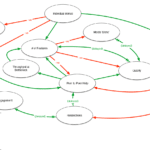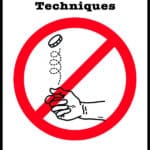Have you ever had friends or family ask, “I know you’re called a scrum master, but what does that mean? What do you actually do?” Go ahead. Tell them that the role of ScrumMaster is as a servant-leader, coach, and facilitator, navigating the dynamics of the team to ensure Scrum practices are followed and value […]
Collaboration, Over Work in Isolation
When I’m working with new Scrum Teams and say that Scrum encourages collaboration among team members, everyone nods and smiles. When I ask them to describe their actual collaboration, I hear about collaboration in Sprint Planning, Review and Retrospective. If I’m lucky, someone mentions solving impediments found in Daily Scrum through collaboration. Wow. Jaw drops. […]
Is Your Scrum Team Good Enough?
If your Scrum Team has been together for years and you’ve been following the Agile principles and Scrum structure, you might be feeling quite confident. Scrum isn’t an inherently easy methodology to adapt, especially since it requires change beyond the personal behaviour level to see the biggest results. So if your team has gotten to […]
Forcing People Back to the Office
In December the Treasury Board of Canada ordered that, starting in mid-January, all employees would be expected to return to the office for two to three days a week. Among the stated goals were: Innovation, Creativity, Fairness, and Consistency. This all ties in well with the Agile Manifesto which includes the principle “The most efficient […]
Agile Bonuses – The Damage They Do
A design pattern is a description of a solution to a recurring problem. It outlines the elements that are necessary to solve the challenge without prompting the reader to address the issue in a specific way. Unfortunately, we also regularly see recurring patterns of ineffective behaviour. These are called Anti-Patterns. The following explores the common […]
Why are Group Decision-making Techniques Important?
Whether we’re facilitating Retrospectives, Sprint Planning, or a Strategy session, there are always decisions needed. How you approach those decisions should vary depending on the degree of cost and whether the decision is easily reversible or not. Given the speed at which Agile moves, we can’t afford a lot of time spent waiting for simple […]
Future Perspective for Change: Why Backcasting Helps Get You Where You Want to Be
When a product team starts work on a product, it’s important that they understand the vision. This is, as they say, a bit of a no-brainer since otherwise they might build something that completely misses the mark. In a modern Agile world, we’re expecting a mix of Product Management, Developers, ScrumMaster, the Customer and perhaps […]
Two Key Things for Sprint Retrospective Facilitation
Retrospectives are a critical element in Scrum but they won’t work well if your team hates them. A Sprint Retrospective needs someone to facilitate and keep it on track to encourage effective discussion. It’s more of an art than a science, but these key things will help. 1. Remain Neutral From the Cambridge Dictionary, facilitation […]







